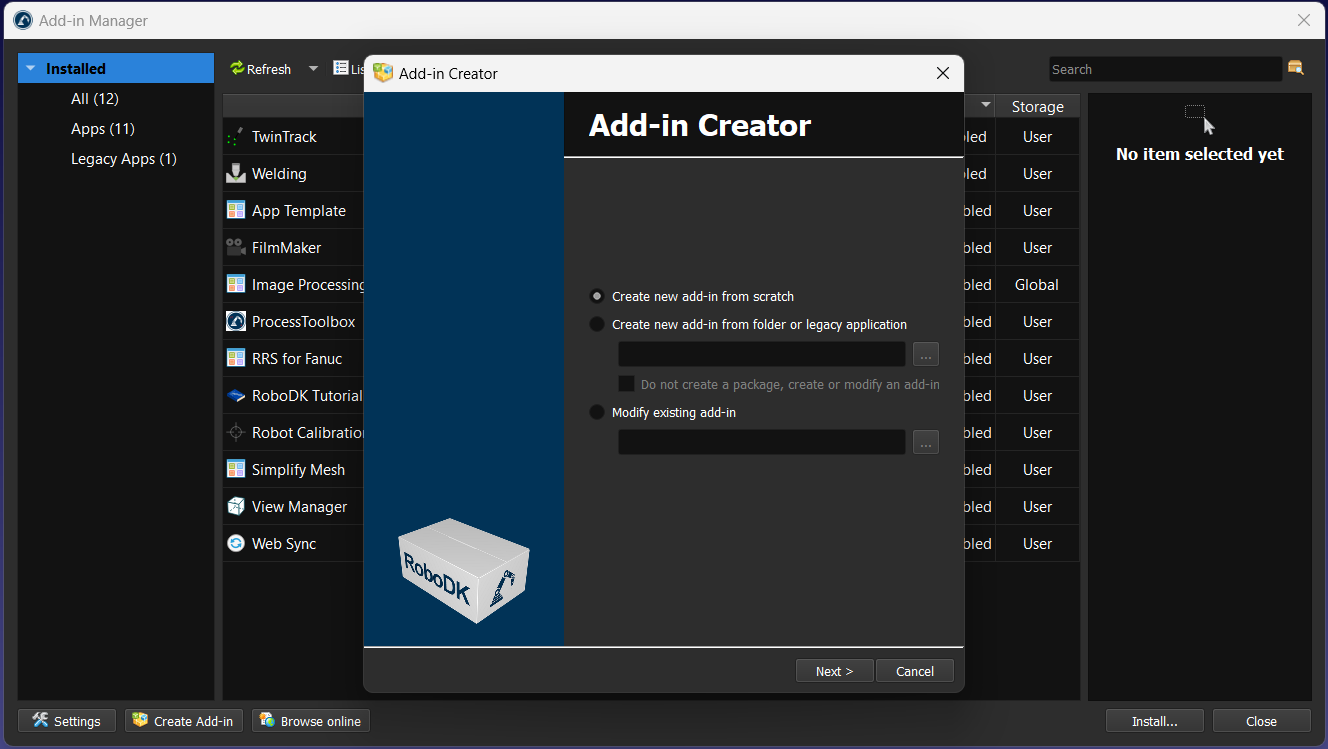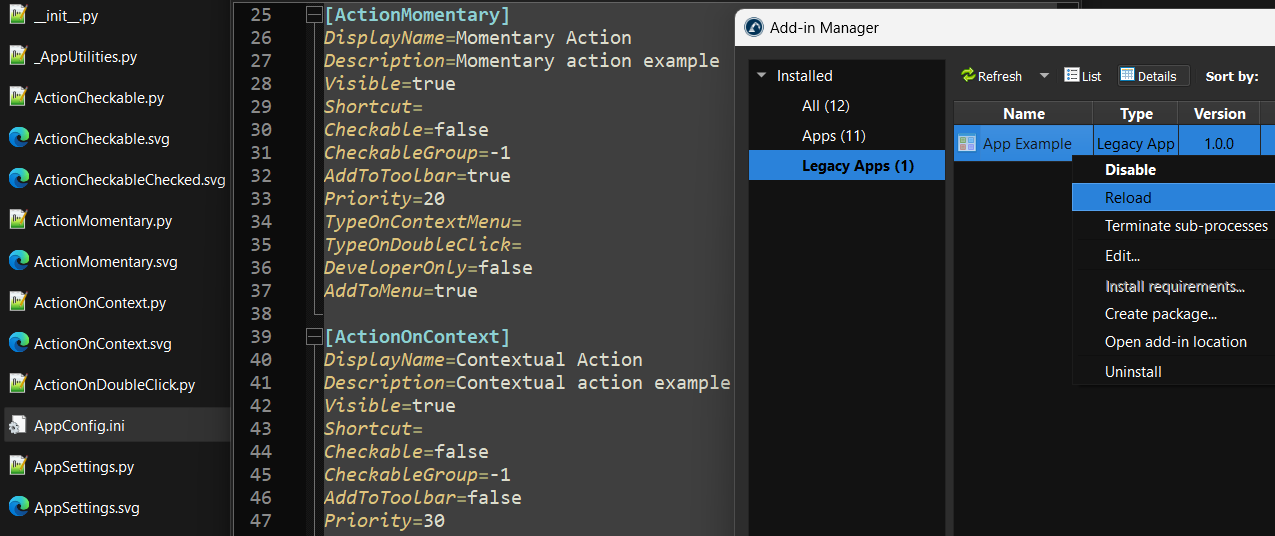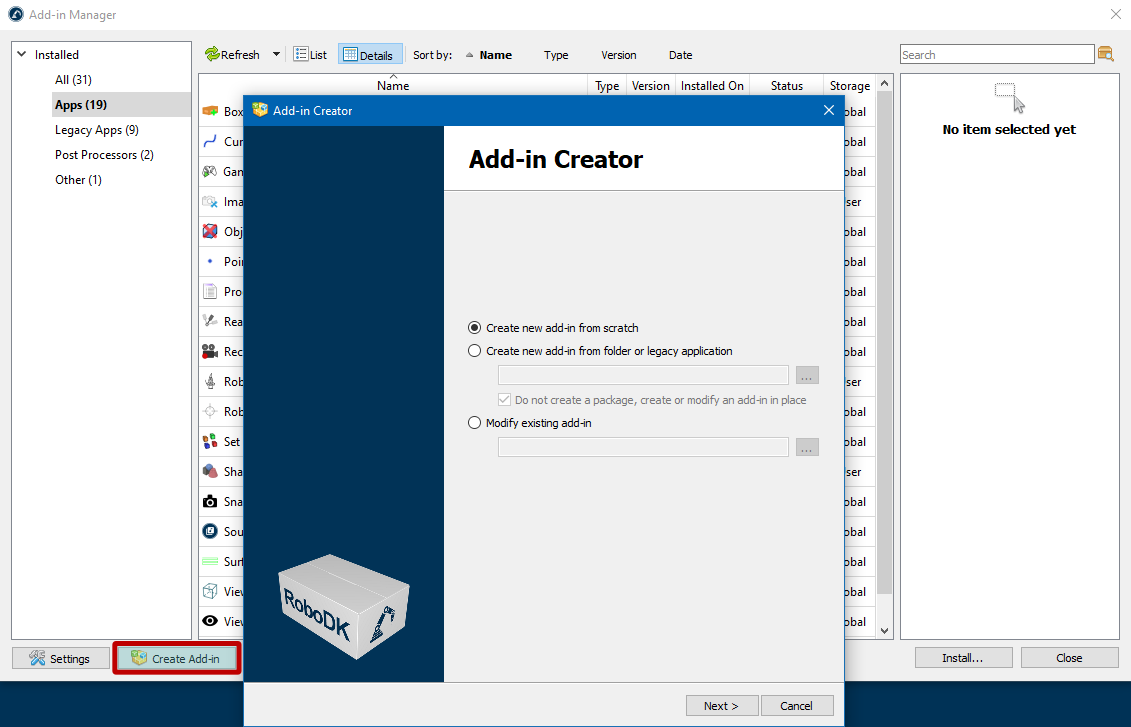Create your RoboDK Add-in
You can easily convert Python scripts into a RoboDK Add-in. Using your scripts as an Add-in allows you to run your scripts directly from the toolbar or the menu to better automate repetitive tasks within RoboDK software.
Follow these steps to create your Add-in:
1.Make a copy of the AppTemplate folder from the Apps folder in C:/RoboDK/Apps/AppTemplate. You can also find other basic examples to start with in the examples of RoboDK Apps on github. You can place the folder in the same Apps folder or any other folder on your computer.
2.Modify, add, or remove the scripts you want to use as actions for your Add-in. Each script will be automatically recognized as a new action, and it will appear on the toolbar (unless the script file starts with underscore).
3.You can optionally add icons with matching file names. Supported icon formats include PNG, SVG and JPG. You can also add or customize the icons later.

From this point forward you can use the Add-in Manager by selecting Tools➔Add-in Manager, then, click on Create Add-in at the bottom of the window. You can then select Link to existing Addin to load your Add-in.

As an alternative to using the Add-in manager, you can configure your Add-in manually by renaming the files and customizing the AppConfig.ini file:
4.Place your Add-in folder in this path: C:/RoboDK/Apps/
5.Open the Add-in Manager and select the Classic Apps tab.
6.Click on Refresh if you don’t see your App listed.
7.Double click on your Add-in to enable it and see it in the RoboDK user interface. This will automatically create an AppConfig.ini file in the folder of your App.
8.Modify the AppConfig.ini file to customize how your app integrates with the RoboDK UI. Each script is automatically detected as an action (unless it starts with an underscore). All actions are placed in a new entry in the RoboDK menu and the toolbar by default. You can customize if you want to see each action/script in the menu, the toolbar and/or as a context menu option for one or more items.
9.Right click on you App and select Reload to see your changes reflected in the RoboDK UI.
10.Finally, you can pack your App as an RDKP Add-in by selecting Create package… and follow the instructions. You can optionally choose to compile the code of your App.
You can install this App/Add-in on any computer with RoboDK by opening this RDKP file with RoboDK.
